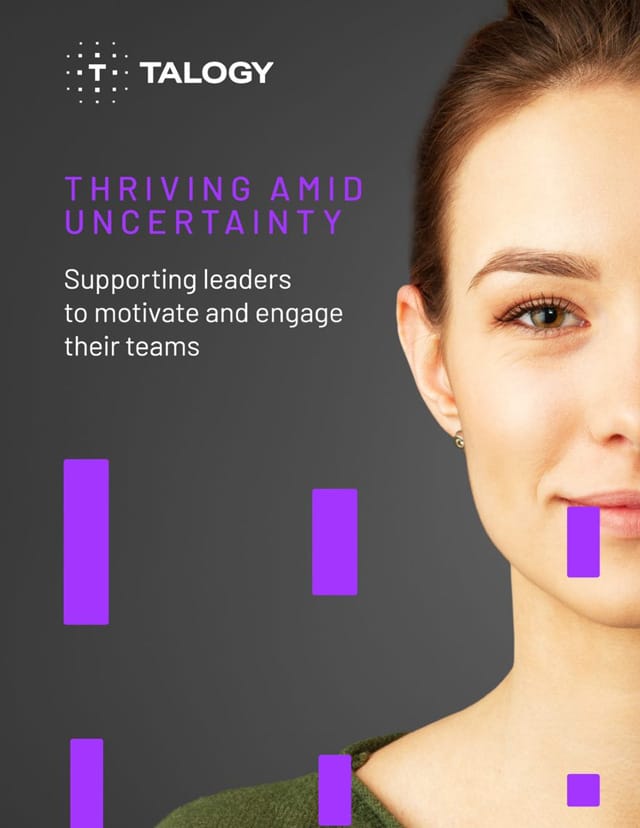Written by Paul Glatzhofer, Group Vice President, Americas
Pre-employment testing and employee assessments are many times thought about in the context of entry- and mid-level positions. While this is at least partially due to the fact that these types of positions have the highest volume of candidates, it can sometimes lead organizations to believe that they either cannot or should not use similar pre-hire assessments for identifying and assessing potential leaders for senior leadership positions. Spoiler alert: That’s simply not the case.
To address this misconception, there are a wide variety of talent assessment tools that target leadership and executive level roles, both for selection and development. There is a lot of data and research that shows that hiring for different levels of leadership is much more important because those individuals drive the culture and make strategic business decisions that can have a large impact on your organization.
Why do I need a leadership assessment?
In a leadership assessment context, an organization looking for valid and predictive methods to both develop and select leaders shouldn’t be asking whether they should utilize an assessment, but rather which assessment they should use. Before we dive into the different methods for identifying and assessing potential leaders, let’s answer the question of why leadership and executive assessments are so valuable. Oftentimes there’s quite a bit of dissonance between best practices and current practices when it comes to this topic.
Most organizations focus on their higher volume positions and have standard processes for these application and selection processes. In contrast, hiring teams responsible for onboarding a new leader will place an emphasis on experience, degree, education, and worst of all, their gut feeling about a specific individual. These criteria have been shown to be incredibly poor predictors of leader performance, with experience, education, and instinct all having very low validity as it relates to prediction of candidate success in a leadership role.
This is part of the reason why leaders fail at a high rate because it is a counterintuitive phenomenon. Therefore, high-level leadership positions should require the strictest, most predictive, and valid assessment processes for hiring, not the least.
Why aren’t more organizations utilizing assessments to help identify and assess potential leaders?
The organizational impact that someone in a leadership role has is much greater and farther reaching than someone in an entry-level position. But, what kind of impact? When organizations have strong leadership, research shows that the business has more innovation, better retention of employees, and outperforms competitors. With that in mind, why is it that most entry-level hiring methods are more objective and valid than those required to help identify and assess potential leaders, which often do not make use of psychometric assessments?
One potential reason is that HR typically handles entry- and mid-level hiring, while hiring senior leaders and executives is handled by upper management. In these instances, hiring teams will fall back on things such as a gut feeling or a candidate’s education because senior leaders are hired more infrequently.
Another reason could be that the organization flat out dismisses the value of leadership assessments when it comes to effectively identifying and assessing potential leaders, or perhaps they don’t want to insult or alienate their candidates by making them take a time-consuming assessment. They would rather trust their own judgment and wing it, making it more likely to get poor performers in the door as a result.
How to choose a leadership assessment
There are a few key variables to consider when choosing a leadership assessment that effectively identifies and assesses potential leaders, including:
- Measurement – Pick a leadership assessment that helps you measure and assess candidates for the most important skills and abilities that leaders in your organization need to be successful. The assessment process doesn’t have to measure every single component, but should assess a good portion of them. Then, hiring teams are able to assess potential leaders for the remaining competencies during the interview portion of the process.
- Reliability and validity – Select an assessment vendor that has experience creating, validating, and implementing leadership assessments for selection and development.
- Developmental feedback – Even if your organization is using leadership assessments for hiring, make sure that you can also get developmental feedback for candidates who are selected. You want to ensure your leaders start with a good development plan from day one.
- Length – Candidates, particularly for senior level positions, are comfortable with longer assessment processes. However, make sure to select an assessment that assesses the right leadership skills without being overly lengthy.
How to assess leadership competencies and skills
So, what should your leadership assessment measure? Regardless of the specific position, industry, or where the person is in their leadership journey, there are a few core competencies you will want your leadership assessment to measure to ensure you can accurately assess an individual’s potential for the role. These include:
- Empowering approach: The reality is that leaders don’t need to have all the answers, but they should possess the ability to empower their people to make good decisions.
- Inspiring purpose: Great leaders are able to give people a ‘why’ and a clear purpose for the work that they are doing.
- Agile mind: Leaders need to be able to look ahead and are always ready to adjust course as needed.
- Focus on momentum: The best leaders keep people moving in the right direction no matter what circumstances are thrown their way.
- Steady presence: A successful leader must be someone who always shows up and that others can rely on.
- Authentic connection: Great leaders focus on people, not just results.
- Emotional intelligence: Leaders need to keep a constant pulse on their feelings and emotions, as well as those of their team.
What is the best leadership assessment tool?
Talogy’s InView leadership solution is based on the results of a global research study that takes into account the changing qualities that will be required of leaders both now and in the future. Its framework measures all of the above traits, acknowledging that the root of leadership is a person’s identity and emotional intelligence. Those components then impact every other competency and ultimately their ability to effectively lead their teams. In a world where 90% of employees and 95% of leaders rated leadership as extremely or very important for organizational performance, proper selection processes are worth the investment.
The positive impacts of leadership assessments
Putting a well-defined leadership assessment process in place to help your organization identify and assess potential leaders will pay dividends. It provides a clear picture of where candidates or current employees are when it comes to possessing the skills and competencies needed to be effective leaders for your organization.
When choosing a leadership assessment, it’s important to remember the critical role they play in not only steering the business in the right direction, but also retaining top talent and creating an environment of psychological safety. Utilizing the right leadership assessments will allow you to hire or promote high performing leaders which can in turn lower employee turnover, positively improve your corporate culture and eventually, your bottom line.
About the author: Paul Glatzhofer, M.A. is an Industrial-Organizational Psychologist, external consultant, and coach with more than 20 years of experience. He has devoted his career to helping organizations and leaders become more effective. Paul has experience with all levels of organizations in both the private and public sectors. As Group Vice President of Americas, Paul overseas the implementation and effective use of leadership assessments and diagnostic tools for both selection and development.




